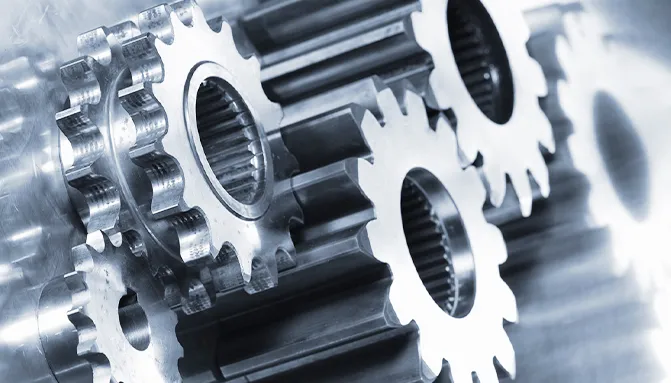Mobile:+86-311-808-126-83
Email:info@ydcastings.com
metal casting tools
Metal Casting Tools Essential Equipment for Precision and Quality
Metal casting is an age-old technique used to create parts and objects by pouring molten metal into a mold. The aluminum chassis of a car, the bronze sculptures in a museum, or even components of machinery are often produced using this method. The success of metal casting relies heavily on the quality of tools used throughout the process. This article examines the essential tools of metal casting and their significance in ensuring precise results.
1. Molds The Heart of Metal Casting
At the core of the casting process are molds. Molds dictate both the shape and surface finish of the cast part. They can be made from various materials, including sand, metal, or ceramic. Sand molds are the most common due to their versatility and cost-effectiveness. They allow for good detail and are reusable, whereas metal molds, though more expensive, provide greater precision and durability for high-volume production. Ceramic molds are often employed for high-temperature applications and provide excellent surface finishes.
The process of creating molds is critical and often involves the use of pattern-making tools. Patterns are replicas of the desired part, which are used to create the mold cavity. Tools like milling machines, lathes, and CNC machines are essential for crafting accurate patterns, ensuring that the final product meets stringent specifications.
2. Pouring Equipment Delivering Precision
Once the mold is prepared, the next step necessitates pouring molten metal into the cavity. Proper pouring techniques are essential to avoid defects such as air pockets or burns, which can compromise the quality of the cast. This is where pouring tools come into play.
Crucibles, used to hold molten metal, must withstand high temperatures and be made from materials that do not react with the metal. Tongs and ladles are tools used to transport and pour the molten metal, requiring a careful balance between durability and heat resistance. Some foundries may employ automatic pouring systems, utilizing robotics to enhance accuracy and reduce labor costs.
3. Cooling and Solidification Tools Critical to Quality
metal casting tools

After the metal is poured, it needs to cool and solidify. This phase significantly influences the final properties of the cast. Cooling can be passive or active, depending on the material and the complexity of the design. Cooling tools, such as cooling jackets and fans, help manage the environment in which the metal solidifies, ensuring even cooling and minimizing stress in the finished part.
Monitoring equipment, such as thermocouples, is also vital during this stage. These devices measure the temperature of the molten metal and the mold, allowing technicians to adjust cooling rates as necessary, which can affect the mechanical properties of the final casting.
4. Finishing Tools Achieving Perfection
Finishing processes are crucial in metal casting, as they refine the surface and ensure dimensional accuracy. After the metal has solidified, it is often necessary to remove the mold, which involves tools like shakeout machines or pneumatic hammers. Once the casting is freed, finishing tools like grinders, lathes, and sanders are used to polish the surface, remove any irregularities, and apply necessary surface treatments.
Further inspection tools, including calipers and gauges, are essential for verifying the dimensions and quality of the cast part. Non-destructive testing (NDT) tools, such as ultrasonic or radiographic testing equipment, can also be employed to identify any internal defects without damaging the cast.
5. Safety Equipment Protecting the Workforce
While the focus is often on the tools that create the castings, the safety of the workforce is paramount. Metal casting involves high temperatures and potentially hazardous materials; thus, protective gear such as heat-resistant gloves, face shields, and proper ventilation systems are essential. Safety tools and equipment not only protect workers but also ensure compliance with health and safety regulations in the workplace.
Conclusion The Backbone of Metal Casting
From the initial creation of molds to the intricate finishing processes, a variety of tools play a critical role in metal casting. Quality molds, precise pouring equipment, effective cooling mechanisms, and thorough finishing tools all contribute to creating superior cast products. As technology advances, the tools of metal casting continue to evolve, enhancing precision and efficiency while maintaining the art and tradition of this ancient craft. Understanding and utilizing these tools effectively is essential for anyone involved in the metal casting industry, ensuring the creation of high-quality components that stand the test of time.
-
Valve Body Acts as the “Heart” of Flow ControlNewsMay.19,2025
-
Understanding the Importance of ImpellersNewsMay.19,2025
-
Importance of Automobile Water PumpsNewsMay.19,2025
-
How an Engine Oil Pan Works to Keep Your Car LubricatedNewsMay.19,2025
-
Common Materials Used in Pump Impeller ManufacturingNewsMay.19,2025
-
Ball Valve Casting in Modern Pipeline SystemsNewsMay.19,2025











